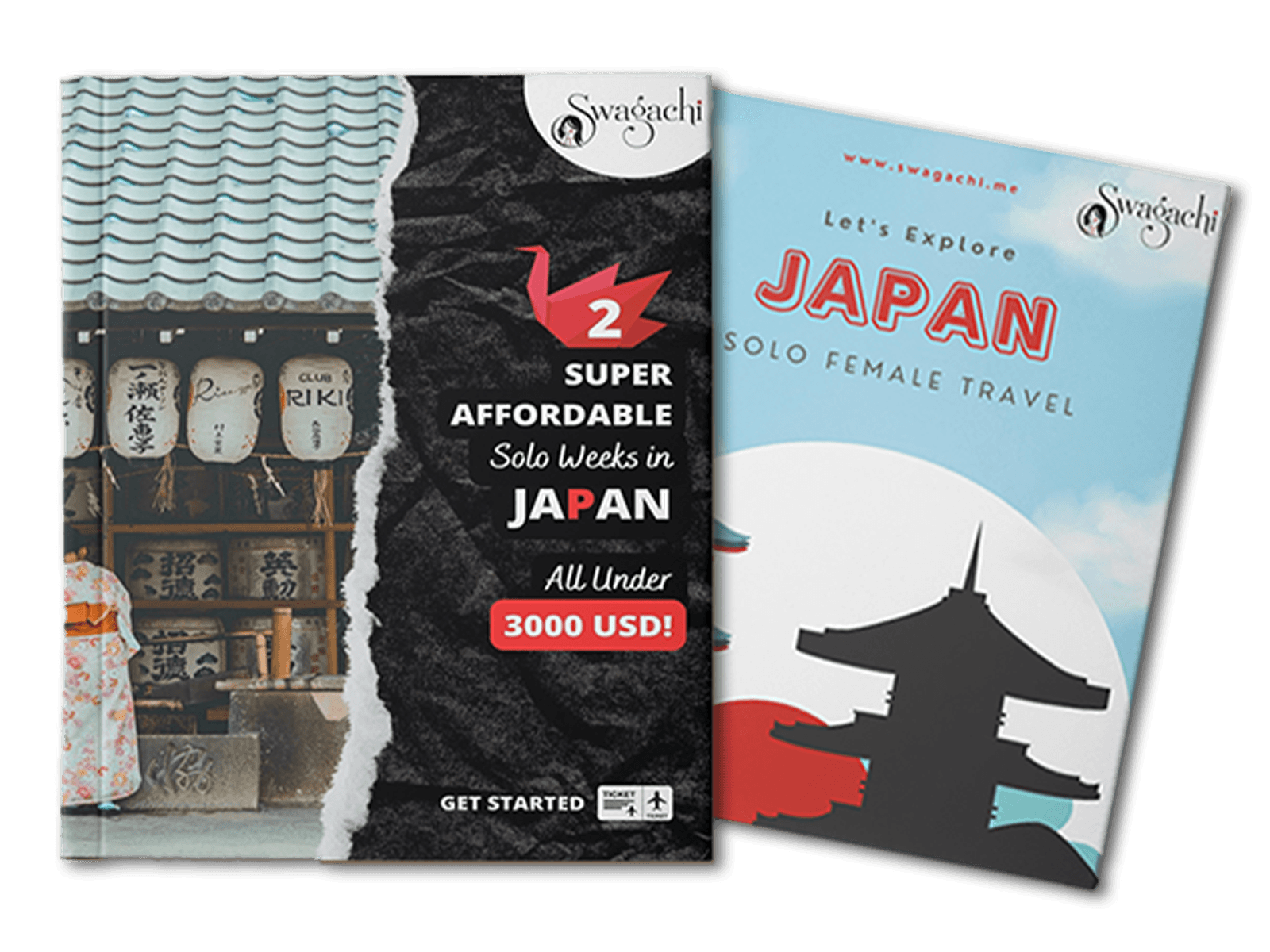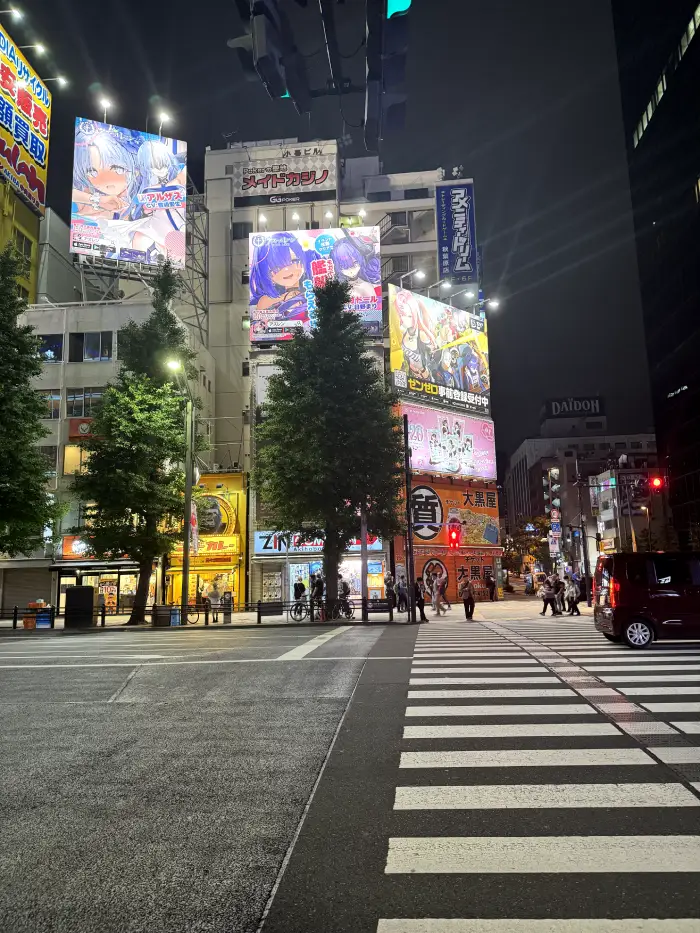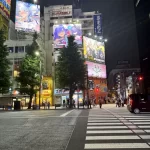As a solo female traveller, when we choose our destination, we look at a variety of factors. Is it a safe country to travel as a solo woman? What is there to explore? Does the journey help me grow (yes, a very pertinent question)? And definitely, what food will I get to eat? And Japan clicks all of these boxes and so much more.
But the other thing we also look at is exploring the essence of the country. And if we talk about the essence of Japan, it is very hard to pinpoint just one thing. That is what makes Japan unique. No matter what your preference is, Japan will serve it up for you. But if you think the country is just about temples and shrines, ramen, bright lights, quirks, and eccentricities, and a glimpse into the future, you are far removed from the truth. And if you want to visit a city that is in Japan but is so much more than the Japan we have created in our heads, book a ticket to visit the city of Nagasaki. A port city tucked away in the lush mountains of Japan’s Kyushu island, what makes Nagasaki special is the role it has played over the years for Japan.
A slice of history
At a time when the rest of Japan was isolated from the outside world for generations during a period called Sakoku, Nagasaki, or more precisely, the Dejima Island was the gateway to other continents, especially Europe. Dejima is a man-made island in the heart of Nagasaki. In the beginning, the Portuguese residents were segregated from the Japanese population and kept to Dejima to keep control of their missionary activities. Once the Portuguese were expelled from Japan, Dejima became the hub for Dutch traders.
But today, for many of us, Nagasaki is synonymous with the bombing during World War II on August 9th, 1945, only three days after Hiroshima met with a similar fate. But in reality, the beauty of Nagasaki transcends everything.
How to reach
Nagasaki is usually not a destination chosen by many. First, because it’s quite “un-Japanese” in its flavor and secondly because the journey to the destination takes time. But the arduous journey is worth it when you enjoy the beauty of Nagasaki. From Tokyo, you board the Shinkansen and reach Hakata station in Fukuoka prefecture. From here, the best way is to get the Limited Express Kamome that runs through Kyushu and heads up to Nagasaki station. It takes you around 5 hours from Tokyo to Hakata and another 2 hours to reach Nagasaki.
Destination | Train fare | Time taken |
Tokyo to Hakata | 13,820 yen | 5 hours |
Hakata to Nagasaki | 6180 yen | 2 hours |
Places to stay
Nagasaki is not a city that many solo female travellers opt for, but they have no clue that they are missing. And even if they do, it is usually just to appreciate the remnants of World War II bombing, and the plan is for a day. But to explore the city in its entirety, a day’s trip is not quite enough. But unlike other Japanese cities, you will not come across many traditional places of accommodation. The Portuguese and the Dutch culture has seeped into almost every aspect of life in Nagasaki and architecture too.
If you are travelling on a budget, Nagasaki is ideal because prices are quite reasonable. Here are three options you can try.
1. Nisshokan Bettei Koyotei
Probably one of the most traditional places you will find in Nagasaki, this ryokan, located on a hill, provides beautiful scenery of the city. It is just a 5-minute away from the JR Nagasaki station, and the ryokan provides free shuttle cars. Like most other traditional ryokans, this also has an onsen where you can take a dip and wash away some of the tiredness after a whole day of sightseeing.
2. Nagasaki Hotel Monterey
If you want to experience the beauty of Portugal while in Japan, look no further than this hotel. Though on a slightly expensive side, this hotel will take you back to the days of sea voyagers coming to Japan from the Mediterranean country. Also, it is a great chance to indulge in some delicious European cuisine.
3. First Cabin
You cannot travel to Japan and not stay at a capsule hotel. And First Cabin is a capsule hotel you should absolutely experience. So if you are travelling to Nagasaki, please do check the availability of this capsule hotel. This is a luxury within a budget, and you get the feel of spending the night at a first-class and business-class airplane without burning a hole in your pocket.
Places to visit in Nagasaki
1. Nagasaki Peace Park
For much of the world, the name Nagasaki relates to one of the most devastating events in modern history. At 11.02 am on August 9th, 1945, the second atomic bomb, which was called “Fat Man,” was detonated over this city, killing tens and thousands, and most of the northern valley was reduced to just rubbles and ashes.
While the city built itself up from the ashes like a phoenix, one cannot help but forget its painful past. And for that reason, the biggest attraction in Nagasaki is the Peace Park in the Urakami district. A tranquil space that commemorated the bombing, the complex has two parks and a memorial museum. In the Hypocenter park, you will find a black monolith that marks the epicenter of the explosion. Just beside this, you will find the Memorial Hall, where the names of all the ones who were killed on that fateful day are recorded in 141 volumes!
Take in the surrounding art and statue and reflect on the horror of the past. Isn’t that the only way to move forward?
2. Atomic Bomb museum
Just a short walk away from the Hypocenter park and memorial is the Atomic Bomb Museum. It is eerie and heart-wrenching almost to see artifacts like a charred lunchbox or a broken pair of glasses or a burnt piece of clothing. It forces you to reflect and realise that life is all too fleeting. Don’t forget to check out the video library to see the interviews of survivors and many other unknown bits of history. As a solo female traveller to Nagasaki, this is an experience you must have to enrich your trip and, in turn, your life.
3. Urakami Cathedral

This cathedral was a few hundred meters away from the bomb epicenter. It was completely destroyed during the blast and was rebuilt in 1959. But everything that was left after the fateful day is now found in the museum, including a wall from the cathedral.
4. Oura church
Church? In Japan. Quite weird, isn’t it? If you were perplexed like me at finding a church in a country dominated by Shintoism and Buddhism, you have to remember that historically Nagasaki has always been a melting pot of different cultures. Built during the Edo period by a French missionary, this is probably one of the oldest churches you will find in Japan. What also makes this church special is European architecture. And if you are like me interested in knowing the story of a place, the ticket price includes the Christian Museum where you can learn in great detail about the rise of Christianity in Japan.
5. Glover Garden
Just beside the Oura church, you will find one of the most popular tourist destinations in Nagasaki. This is also a destination where you feel that you are no longer in Japan but rather in a country of Europe. Located on a hill, the view of the Nagasaki Harbour from the top is definitely a sight to behold. As a solo traveller in Nagasaki, this will be another of those moments where you take time out and reflect. During the cherry blossom season, this garden adds to its beauty as it is decked in pink and white hues. The main attraction is the European-styled Glover house right in the middle of the garden. This is also the oldest Western-style wooden building in Japan. It belongs to a Scottish merchant named Thomas Glover, and he later played an active part in the history of Japan’s industrialisation.
6. Shinchi Chinatown
As a solo female traveller to Japan, wouldn’t it be an added bonus if you could also experience authentic Chinese experience in a different country? I think it is. The Chinatown in Nagasaki is actually the oldest of its kind in Japan, and like the Dejima island for the Dutch, the Chinese have claimed the island and hence the name Shinchi (new land in Chinese). The Chinese no longer have an island to themselves, but Chinatown has survived. And if you happen to travel to Japan between late January and early March, you can also witness the Nagasaki Lantern Festival, where thousands of lanterns are lit and flown high into the air. The whole city has a mysterious and magical charm to it during this time. Also, this will give you the perfect reason to fill your bellies with some delicious Chinese-Japanese fusion food.
7. Confucius Shrine
Shrines and temples are nothing new when you are in Japan, but what makes the Confucius shrine different is that it is one of the few shrines in Japan that is dedicated to the Chinese philosopher. Built in 1893 by the Chinese community in Nagasaki, the shrine was a place for learning. It was severely damaged during the atomic bombing but was again rebuilt after that. The entrance is beautiful with a small creek and a bridge over it, and then you can admire the Chinese carvings on walls and Chinese architecture. The main attraction here is definitely the life-size statues of the 72 disciples of Confucius.
8. San’no shrine
When you visit Nagasaki as a solo female traveller, the loss and destruction that has plagued the city’s past will always be reminded in every corner of the city. But the real story is not one of destruction but the way the city rebuilt itself. The survivors of a city that was so diverse came together as a breaking barrier to revive the city again. The place where you can discover a serene refuge that says the story of the city’s resilience is the San’no shrine. The peace and tranquility you will feel here is just an added bonus. The 500-year old camphor trees in the compound that survived the blast are, in a way, a testament and a symbol of the city’s spirit.
9. Gunkanjima or Battleship Island
If you are a movie buff like me, then this one is a piece of cinematic marvel for you. Gunkanjima is the island that you might have seen in the James Bond movie Skyfall. But the history of this little island some 15 km off Nagasaki is fascinating. You have to take a tour boat that is operated by multiple companies around the Nagasaki harbor to reach this deserted island. Not too long ago, the island was a coal mining hub, and about 5000 people made the tiny island their home. But the coal mines were closed down in 1974, and since then, the island has been left deserted, and many years later, it now looks eerie.
Food in Nagasaki
The best way to understand the true essence of a city is through your palette, and Nagasaki is not different. It is no secret that Japanese cuisine has made its mark on the world stage. Each city, be it Tokyo, Osaka or Kyoto, or anywhere else in Japan, puts a local spin on traditional Japanese food, but no other city has boast of what Nagasaki can provide: a European spin.
Because of its heavy Dutch and Portuguese influence, food in Nagasaki is really interesting. Here are a few foods that you absolutely must try on your solo travel to Nagasaki.
1. Shippoku Ryori
Shippoku is a traditional amalgamation of cuisines. It is a meal of 8-1 courses which borrows heavily from Japanese, Chinese and Dutch influence. It mainly includes fried chicken, braised pork, red snapper, fin soup, just to name a few.
2. Sasebo burger
Brought in by Americans, this is your quintessential burger with a Japanese twist. The flavours of the patty are Japanese, while it is usually served with bacon and fried egg.
3. Nagasaki beef
We have all heard of the Japanese wagyu, but you have to try the Nagasaki variety if you are a true foodie. It is extremely succulent and tender, and yes, it has also won the highest award at a wagyu competition that is held in Japan every year.

So, when you plan to visit Japan, do include a trip to Nagasaki in your itinerary. You will realize that Japan is so much more than what meets the eye. And you feel left with an aching heart but rich in experience.








Leave a Reply